Few pesticides are more dangerous than brodifacoum, an anticoagulant used on rodents. And few pesticides have been more grossly abused by homeowners and farmers.
Because brodifacoum accumulates in the liver it can kill any bird or mammal that eats the dead or dying rodents. When applied carelessly on the mainland, nontarget victims have included everything from raptors to fishers, cougars, bobcats, foxes, coyotes, wolves, pet cats and pet dogs.
Clinical Assistant Professor Maureen Murray of the Tufts Cummings School of Veterinary Medicine in Grafton, Massachusetts showed me photos depicting typical results of these secondary poisonings. A red-tailed hawk's body cavity glistened with unclotted blood, and her left eye had ballooned to 5 times normal size. The well-developed blood vessels in her oviducts had ruptured, and she had slowly bled to death from the inside. A great horned owl had a hematoma running the length of its left wing; at least two dozen other poisoned raptors had pools of blood under dissected skin.
In 2018 brodifacoum, applied to illegal synthetic marijuana sent 107 people to the hospital, bleeding internally and coughing up blood. Three died.
Among pesticides brodifacoum is a weapon of mass destruction. It should never be used by the public. Why on earth would wildlife advocates defend it?
The answer is that brodifacoum is almost always the only tool available to professional wildlife managers for preventing extirpation or extinction of native wildlife on rodent-infested islands.
Managers of the U.S. Fish and Wildlife Service (USFWS), the National Park Service and such NGOs as Island Conservation and The Nature Conservancy use brodifacoum to eradicate rats and mice introduced by humans. If they miss one female and one male, they fail. They need a WMD.
Islands comprise only three percent of the planet's land mass, but 95 percent of all bird extinctions have occurred on them. Today only 10 percent of the world's islands are free of alien rodents. But brodifacoum is quickly changing that. Now on hundreds of islands around the globe native wildlife not seen for decades or centuries is surging back.
The most spectacular victory has just been won on the UK's subantarctic South Georgia Island, strewn with glaciers, ravines and jagged, ice-bound peaks, many over 6,500 feet high. In May 2018 it was declared rat free after being infested with Norway rats since they disembarked from whaling ships in the 1800s.
Team Rat, consisting of the South Georgia Heritage Trust, Island Conservation, and organizations and biologists from around the world, used helicopters to drop 300 metric tons of brodifacoum-laced grain bait (unpalatable to almost all birds) across the island's 1,450 square miles. The project, eight times the size of the second largest successful rodent eradication, cost $13.5 million and took nearly a decade.
Before the 1975 advent of brodifacoum, killing all rodents on almost any island, let alone one like South Georgia, was inconceivable.
The rats had eliminated 90 percent of South Georgia's birdlife. Even the wandering albatross, with a wingspan longer than any other bird on earth, was unable to defend its eggs and chicks.
Prior to the rat infestation the island sustained 33 bird species and had been the planet's richest seabird-nesting habitat. Now it's fast regaining that status.

Before brodifacoum treatments started, the South Georgia pipit (the only songbird in the Antarctic) had been all but extirpated. Today there are so many South Georgia pipits that their vocalizing drowns out the roaring and grunting of elephant seals.
Palmyra Atoll, 1000 miles south of Hawaii, is a national wildlife refuge jointly owned and managed by The Nature Conservancy and the USFWS. Black rats, accidentally introduced by the U.S. Navy during World War II, had eliminated most of the seabirds and vegetation. Since 2011, when all rats were eradicated with brodifacoum, brown noddies, blue noddies, black noddies, white-tailed tropicbirds, wedge-tailed shearwaters and gray-backed terns have repopulated. And there has been a 5,000 percent increase in native trees.
Brodifacoum works well on lagomorphs as well as rodents. Since the early 20th century, alien European rabbits had de-vegetated Chañaral and Choros Islands off northern Chile, devastating populations of Humboldt penguins, diving petrels, braided tree iguanas, Atacama tree iguanas, many-spotted tree iguanas, Chilean slender snakes, and a wide variety of insect and arachnid species including a beetle found only on Choros and a species of spider found only on Chañaral.
From 2013 through 2017 Island Conservation, partnering with the Chilean National Forestry Corporation, U.S.-based funders and Wisconsin-based pesticide manufacturer Bell Laboratories, Inc., treated Chañaral and Choros with brodifacoum, eliminating the rabbits. Recovery of island flora and fauna has been rapid and spectacular.

In 2014 biologist Karen Andrew of the New Zealand Department of Conservation was working on eradication, via brodifacoum, of European rabbits, black rats and house mice from Australia's 32,124-acre Macquarie Island in the Southern Ocean (a World Heritage Site). At that time she saw only an ecological desert of landslides and bare earth. Hardened though she is to this kind of alien-wrought devastation, when she returned to the alien-free island in 2018 her reaction to the stunning proliferation of seabirds, insects and lush new vegetation was to weep.
The two biggest obstacles to recovery of alien-degraded island ecosystems are global warming (with resultant sea-level rise) and public ignorance (with resultant opposition to professional application of brodifacoum).
For example, condemning the Macquarie Island project for the online publication Quadrant, John Reid calls brodifacoum "very nasty." That's the only truthful statement in the entire piece. He then proceeds to recycle all the standard mythology about the pesticide's professional application. Among his many fabrications is the claim that "hundreds of tons" of brodifacoum were applied. There isn't enough brodifacoum in the world to apply even one ton. What was applied was hundreds of tons of grain bait, this laced with several ounces of brodifacoum. Reid concluded with: "Why does 'introduced' always mean 'bad'? There seems to be a puritanical impulse among environmental types to restore the world."
Not all "environmental types" disagree with Reid. Environmental activist Maggie Sergio of Fairfax, California proves the old saw that one concerned citizen can make a difference. She proves also that this isn't always a good thing.
Sergio—CEO of Island Watch, an "international organization" basically consisting of herself—is among the world's busiest opponents of rodent eradication. She condemns it as "inhumane."
"People are doing this to make money," she told me. "This is insanity."
Sergio has had impressive success in her efforts to delay a project that would restore the native ecosystem of the Farallon National Wildlife Refuge, 30 miles seaward of San Francisco.
Despite native-wildlife reduction by an invasion of alien house mice, the refuge still sustains the largest seabird colony in the contiguous United States—at least a quarter million birds of 13 species, including some 2,000 (about half the world's population) of ashy storm-petrels, listed as endangered by the International Union for the Conservation of Nature (IUCN).
In warm weather, when Americans visit their refuge, the ground undulates with mice—roughly 500 per acre. If you recline in low light outside one of the recently mouse-proofed buildings, they crawl over your face, down your neck and up your legs. They prey on pollinators of native plants, spread weed seeds and are believed to infect seals and sea lions with diseases. They eat the Farallon camel crickets, found nowhere else on earth, and compete with (and probably eat) the Farallon arboreal salamanders, also found nowhere else on earth.
Unlike other islands, where alien rats and mice consume seabirds and eggs, these mice eliminate seabirds by attracting burrowing owls. Before the mouse invasion the owls would rest briefly on their fall migration. Now they hang around well into winter, unable to tear themselves away from the lavish banquet. With the first rains of autumn, seeds germinate and thus become unavailable to the mice. Without this food source they eat each other. Only a few make it to spring, but always enough to regenerate plague-like numbers.

Before the annual spring mouse irruption the owls are forced to switch to ashy storm-petrels. It's a bad deal even for the owls because, despite the horrendous damage they do to the petrels, there aren't enough birds to sustain them for long. So they sicken and die or, weakened, face a dangerous and late migration.
Such was the ecological havoc wreaked by the alien mice that the USFWS resolved to follow its legal mandate of protecting and restoring native ecosystems on national wildlife refuges. It decided to apply rodenticide, preferably brodifacoum. That was in 2004. As of this writing, the agency hasn't even completed a final environmental impact statement.
Funding has been part of the problem, but so has vicious public opposition; and it's clear that the latter has exacerbated the former.
Sergio, and the individuals and organizations she has whipped to a froth of fear and loathing about professionally applied rodenticide, are largely responsible for preserving the mouse infestation.
Sergio deluges the media with fiction about the planned project, claiming, for example, that "1.3 metric tons of brodifacoum" will be dropped by helicopters on 120 acres. The plan is to drop 1.43 ounces of brodifacoum, this to be mixed with 1.2999999 metric tons of grain bait.
"The pesticide label for Brodifacoum 25 indicates that up to 24 [sic] pounds per acre will be applied," Sergio proclaims in print. No, "Brodifacoum 25" means the bait contains 25 parts toxicant per million.
Impressed by these and other untruths, 32,582 people have signed onto an online petition to block the project.
Also impressed by Sergio's call to nix recovery of the refuge's native ecosystem are virtually the entire animal-rights community, the City of San Francisco (which has recycled her fiction about the alleged plan to drop "1.3 metric tons of brodifacoum"), and even the Ocean Foundation which, among other things, frets about what it calls the "inherently inhumane" treatment of invasive mice.
No pesticide is completely selective, so when island wildlife is restored with brodifacoum there's usually minor "by-kill" of nontarget species, almost always through secondary poisonings. Never is it ecologically significant; and it is steadily diminishing thanks to Bell Labs' short-lived baits.
In the Huffington Post Sergio scolds all bird groups, save one, for their enthusiastic support of ridding the Farallon National Wildlife Refuge of alien mice. "The American Bird Conservancy," she writes, "is the only bird conservation organization that hasn't been drinking the USFWS/Island Conservation Kool-Aid."
Among the most vocal critics of the project has been Michael Fry who warns about possible by-kill of a very few super-abundant western gulls. Before and after he transferred from the American Bird Conservancy to the USFWS he contacted Sergio, expressing his passionate opinions about why the Service's project should be blocked. She, of course, quotes him at every opportunity.
Fry's behavior at the USFWS inspired me to send the following note to then its then director Dan Ashe: "While Fry has never participated in rodent eradication, he has a right to express his minority opinions to his fellow USFWS employees, as he has been vociferously doing. What he does not have a right to do is contact the media in order to publicly lobby against a long-planned USFWS project and one that is undergoing environmental review. I find it appalling and highly unethical for a USFWS employee to send unsolicited emails voicing opposition to an important USFWS project to the media, in this case an animal-rights radical."
At least Fry was okay with the project, still under way, on Hawaii's 284-acre Lehua Island. Polynesian rats had been wiping out frigatebirds, federally threatened Newell's shearwaters and grievously depleted band-rumped storm-petrels, wedge-tailed shearwaters, brown boobies, red-footed boobies, Laysan albatrosses, black-footed albatrosses, Christmas shearwaters, Bulwer's petrels, red-tailed tropicbirds and black noddies.

The carnage is essentially over thanks to rodenticide applied by Island Conservation, the USFWS, National Fish and Wildlife Foundation and a host of state, federal and private partners. The last few rats are currently being "mopped up," reports project spokesman Dan Dennison.
But recovery of Lehua was delayed and nearly blocked by public opposition, including an online "Stop the Drop" petition.
Island Conservation's global affairs director, Gregg Howald, told me this: "For years we'd been reaching out to the community with blog postings, talking with people and holding public meetings. It wasn't until late July [2017] that a few vocal individuals realized this was really going to happen and started trying to stop it, making lots of noise and drawing media attention. It was just off the rails. We had a public meeting in which people yelled at us for over two hours. It was horrible. Despite all our outreach, we wound up with a confrontation that started a cascade of anti-project misinformation."
The chastened partners elected to use brodifacoum's weaker and less-effective cousin, diphacinone, which may explain why the initial kill wasn't complete.
Naturally, Sergio was in full cry. For example, she falsely proclaimed that "11.5 tons of diphacinone" was dropped by helicopter and that five pilot whales, which a month and a half later beached themselves and died 18 miles to the northeast on Kauai, were possible victims of the Lehua recovery project.
What was dropped was 8.5 tons of grain bait, of which .005 percent was diphacinone. And it had no effect on the pilot whales, a species notorious for beaching themselves and dying throughout their global range.
There was no shortage of public opposition before Sergio's involvement. In 2001, the National Park Service, Island Conservation, the American Trader Trustee Council (which oversees a settlement from a 1990 oil spill off Huntington Beach), and other partners began eradicating the black rats that were wiping out seabirds on 699-acre Anacapa Island, part of the Channel Islands National Park off southern California.
"Species go extinct all the time" and "Who are humans to call other species invasive?" were typical of print-media comments savaging the project and quoted by William Stolzenburg in his 2013 book "Rat Island."
So infuriated was the public that park rangers saw fit to arm themselves and wear bullet-proof vests.

Anacapa deer mice, native to the island, were evacuated and held until after application of brodifacoum-laced bait.
Hours before the project got under way two men landed in an inflatable boat, stormed the beach and began flinging pellets of Vitamin K—brodifacoum's antidote.
Still, all the rats died; and today the island's native ecosystem has fully recovered. Hatching success of the Scripps's murrelet, listed as threatened by the IUCN, is 90 percent. That's up from 20 percent before rat eradication. And ashy storm-petrels, the species blighted by house mice on the Farallon National Wildlife Refuge, are nesting on the island for the first time in recorded history.
Fear and loathing of all poisons in all situations is, alas, a global phobia. Whenever rodenticide is used to save native wildlife these are the standard objections, and I quote from online comments: "There has to be a better way." "The non-native species didn't ask to be put there." "Other [nontarget] wildlife will die." "Killing one species in favor another is wrong." "Poisoning animals is cruel." "Island Conservation is playing God."
There is no "better way"; in fact, there is no other way. That "non-native species didn't ask to be put there" is no reason to allow them to remain and thereby usher native species into oblivion. While there has frequently been by-kill of nontarget wildlife, it has had no significant or permanent effect on any population; and it is steadily diminishing. "One species" has never been killed "in favor of another"; individuals of introduced species have been killed to save entire native species. "Poisoning animals" is nowhere near as cruel as allowing native wildlife to starve or be slowly gnawed to death (see this video, but not before you eat).
Finally, correcting our past mistakes (instead of sitting on our hands and watching island ecosystems get trashed as a result of those mistakes) is not "playing God."
This is Part II of Chemophobia in America. You can read Part I here.




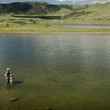
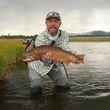
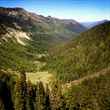
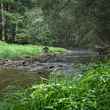



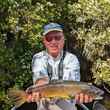
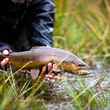



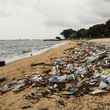




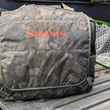




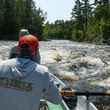


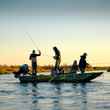

Comments
Paul Doscher replied on Permalink
Well done, Ted. Pesticides and poisons create complicated questions about when and where they are appropriately and properly used. Too many are used too indiscriminantly by homeowners, farmers and other non-professionals. But when even the most dangerous poisons are used by professionals in the name of restoring island ecosystems that we humans damaged in the first place through our negligence or ignorance, those of us who normally decry the excessive use of these substances should think harder and deeper before criticizing.
Edward F Williams replied on Permalink
I’m delighted to report that four days after this piece went live the U.S. Fish and Wildlife announced release of the final EIS on the Farallon National Wildlife Refuge mouse eradication project. The preferred alternative is brodifacoum. Well done USFWS!
Best,
Ted
Edward F Williams replied on Permalink
More on the great work of Island Conservation and its many partners:
https://www.islandconservation.org/13-species-conservation-havens/?fbcli...
Best,
Ted
Neil Thomas replied on Permalink
This is a great series of articles. Thanks.
Joe replied on Permalink
Thank you. Really good reporting.
Pages